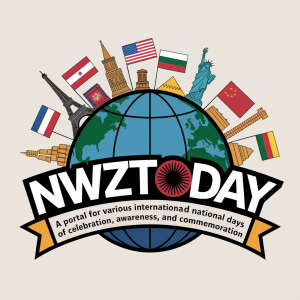Near Miss Day – March 23, 2025
Every year on March 23, the world takes a moment to reflect on an event that reminds us of our vulnerability in the vast cosmos. Near Miss Day is not just a day on the calendar; it’s a reminder of how close we once came to a celestial catastrophe and how science and vigilance keep us safe from such threats. On this day in 1989, an asteroid named 4581 Asclepius whizzed past Earth at a distance so close that it could have caused massive destruction had it collided with our planet.
Why Is Near Miss Day Celebrated?
Near Miss Day is observed to remind humanity of the asteroid that came within 500,000 miles of Earth in 1989. While that distance might seem vast, in astronomical terms, it’s a hair’s breadth away. The asteroid’s trajectory was so close that it was only discovered after it had already passed. This day serves as a wake-up call to emphasize the importance of planetary defense and the ongoing efforts of astronomers and scientists to track celestial bodies that could pose a threat to Earth.
The History Behind Near Miss Day
The story of Near Miss Day begins on March 23, 1989, when asteroid 4581 Asclepius came within a whisker of Earth. This near-miss event was significant because, had the asteroid impacted the planet, it would have released energy equivalent to a large-scale nuclear explosion, causing catastrophic damage. Fortunately, the asteroid passed by without incident, but it left a lasting impression on the scientific community and the general public, highlighting the need for vigilance in monitoring the skies.
Significance of Near Miss Day
Near Miss Day serves as a stark reminder of the potential threats from near-Earth objects (NEOs). It underscores the importance of funding research and technology to detect and deflect asteroids that could endanger our planet. This day also highlights the incredible advancements in space science and the role of international cooperation in safeguarding Earth from cosmic threats. It’s a day to appreciate the tireless efforts of astronomers and space agencies who work to keep us informed and prepared.
How Is Near Miss Day Observed?
Observing Near Miss Day can be both educational and fun. Here are some ways you can mark the occasion:
- Learn About Asteroid Impacts: Dive into documentaries or read books about asteroids and their impact on Earth’s history.
- Visit a Planetarium: Many planetariums host special events and lectures on Near Miss Day to educate the public about asteroid threats.
- Engage in Stargazing: Take a moment to look up at the night sky and marvel at the universe’s vastness.
- Support Space Research: Donate to organizations dedicated to tracking and studying asteroids and other celestial bodies.
Fun Facts About Near Miss Day
- Asteroid 4581 Asclepius was traveling at a speed of approximately 46,000 miles per hour when it zipped past Earth.
- The asteroid’s close encounter inspired the creation of many asteroid monitoring programs worldwide.
- NASA’s Planetary Defense Coordination Office (PDCO) was established to detect and mitigate potential asteroid impacts.
- Earth experiences thousands of meteorite impacts each year, but most are too small to cause significant damage.
Call-to-Action
Near Miss Day is a perfect opportunity to learn more about the universe and how we can protect our planet. Share this blog with your friends and family to spread awareness about asteroid threats and the importance of space research. Let’s work together to ensure that humanity is prepared for any cosmic challenges that come our way. Mark your calendars for March 23, 2025, and join the global conversation about our place in the cosmos!









